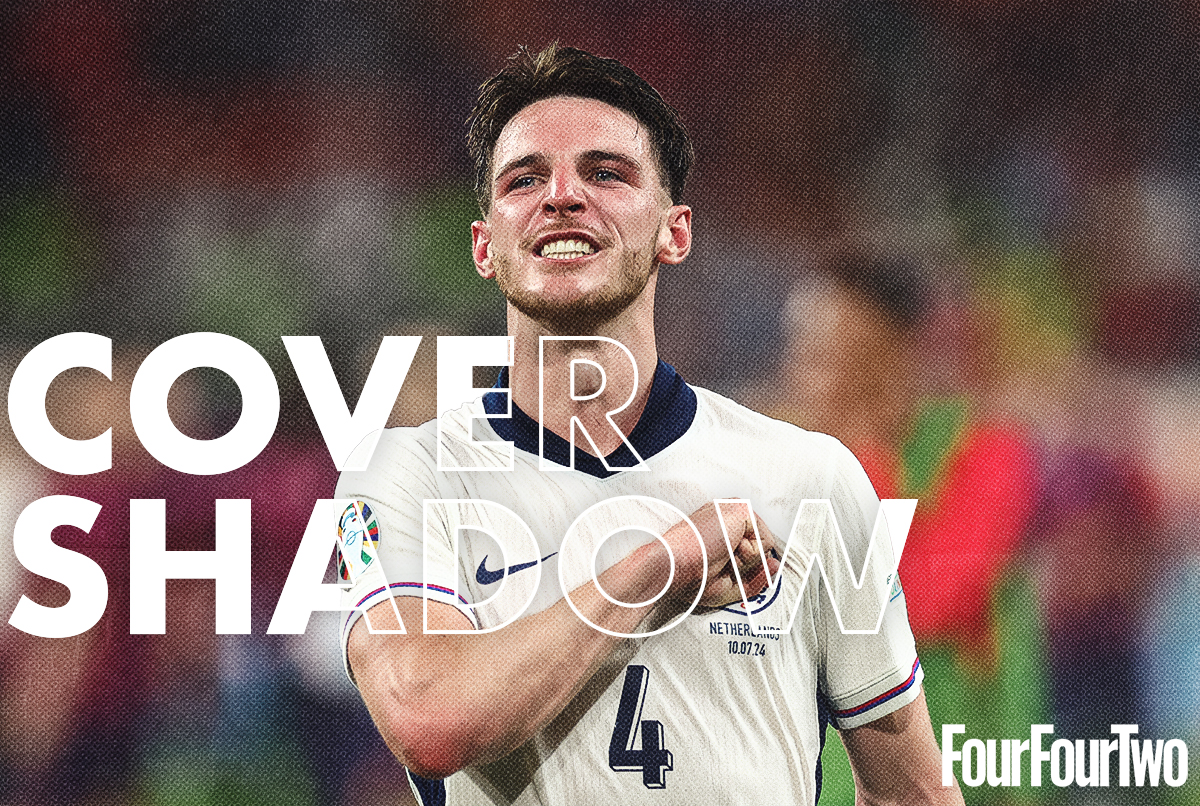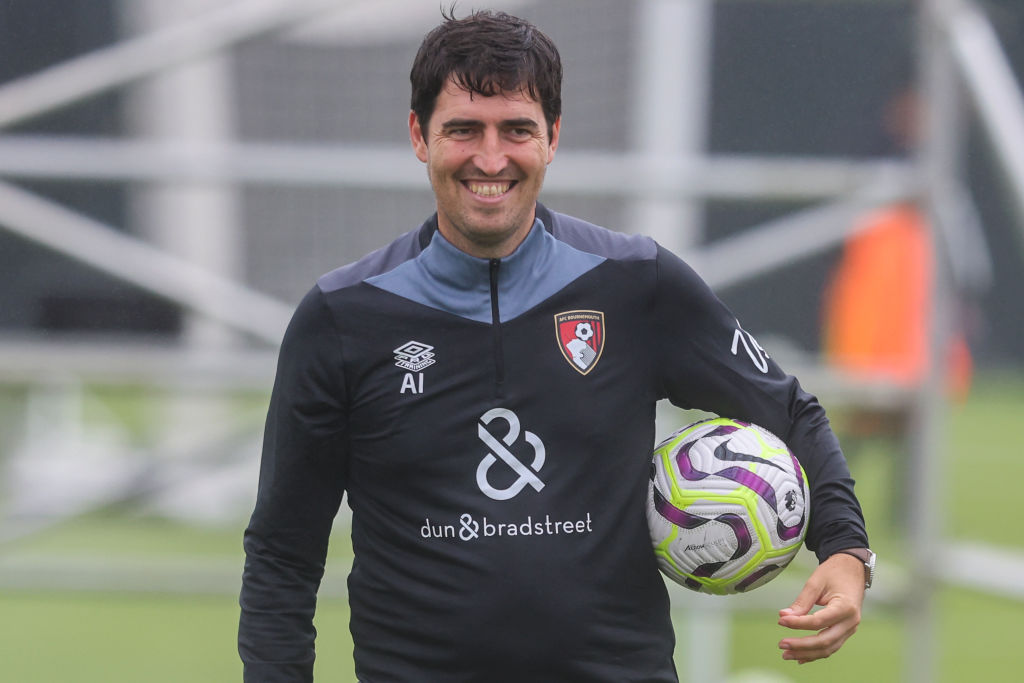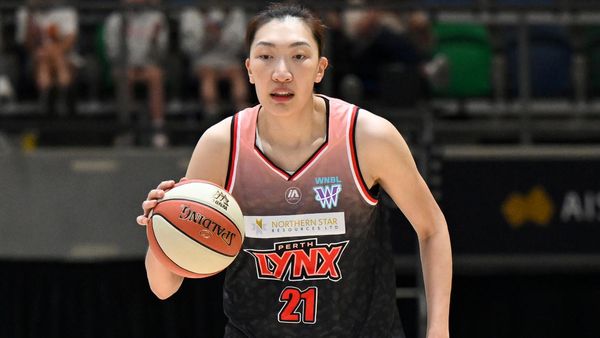
Oh, the trusty cover shadow. There was a time in football where being caught between going for the ball or holding your ground was something of a cardinal sin.
If you were man-marking, man mark. If you need to close the ball down, do so. Tracking, marking and tackling were the cornerstones of good defending. But that has changed. Thanks primarily to the cover shadow.
But what is the cover shadow? Here’s your tactical explainer, as FourFourTwo breaks down yet another football term for your lexicon. Let's delve in.
What is the cover shadow?
When a player, out of possession, positions himself between an opponent on the ball and a player open for the pass, he's covering that open player with his shadow.
You're halfway there already. The cover shadow is a pressing mechanism that gives teams a guide on how to win the ball back when out of possession.
In the clip above, the green team are trying to play out from the back: the goalkeeper moves the ball to a centre-back, only for the navy-blue midfielder to jump and press: he's approaching the green defender, with a green midfielder in his cover shadow, leaving little option to play between the lines. With the navy-blue team smothering the green team's right-hand side and the green centre-back backed into a corner where he can only play the ball back to source, the keeper is pressured into clearing for a throw-in.
Having the pressing player in the cover shadow, means they are not moving towards the ball or man-marking a potential receiver. Instead, the aim is to mark the space between the two opposition players.
This allows the defending team to organise themselves strategically. If using cover shadows smartly, the team without the ball can end up forcing the side with the ball to funnel passes backwards, retaining possession but losing penetration.
The defending player will be restricting the opportunity for the open player to receive the ball and thus prevents the pass. It is a less aggressive way of defending, compared with pressing the ball carrier at maximum speed for instance. But using cover shadows often proves highly effective.
Who uses the cover shadow?

With man-to-man marking a less common practice at the top level of football, (although it does still happen occasionally) nearly every team will use the cover space. But still some use it more regularly than others.
One of the best examples from across Europe is Declan Rice. Since joining Arsenal, Rice has shown the world what West Ham fans knew for a long time: he is far more than just a tough-tackling no.6.
The England and Gunners star doesn’t simply regain possession through tackles. Instead, he is a master of using the cover shadow to cut passing lanes and make interceptions. Rice is also pretty handy on the ball himself and has at times been deployed further up the pitch in a no.8 role, pressing high up the pitch.
Managers like Andoni Iraola and Mikel Arteta have used an aggressive style of pressing with the intensity of a gegenpress: but its key is to play off an opponent's own limitations. Arteta famously claimed that football is about “habit and angles” – and by dividing the pitch into left and right, both Basque bosses look to force teams onto one side, overload that side with markers and leave defenders having to turn onto their weaker side, in order to play away from danger. Essentially, both Arsenal and Bournemouth gamble on a backline's angle bias and inability to change direction before the out-of-possession team have numerical superiority while the in-possession team build up.
However, Rice and his fellow Arsenal midfielders were given a taste of their own medicine in a Champions League defeat at Porto in early 2024, with the former European champions using cover shadows to perfection when in their defensive shape.
Porto forwards Wenderson Galeno and Evanilson allowed Arsenal centre-backs to have the ball, but then tucked inside to mark the space between the defenders and Gunners’ playmaker Jorginho. They also made sure they always had players in front of Rice and Martin Odegaard to stop Arsenal building tempo through the middle of the pitch.
It led to a slow, jerky contest devoid of any fluency. Thankfully for Arsenal fans, the Gunners eventually put things right in the second leg after losing 1-0 in Portugal.
What are the pros and cons of the cover shadow?

The main issue with trying to close space and prevent passes with this tactic, is that you don’t know where the opposition are behind you. Even if utilising the cover shadow, the defending player still has to face the ball.
This means a team with clever movement in the next third of the pitch will still be able to find space for their defenders to find them between the lines. There is a risk that should the on-the-ball team position themselves well enough and give themselves optimum passing angles, they'll be able to play around the press – even if opponents are tracking two players.
Oh, and any tactic in which one marker has to jump between two markers is risky. You've played piggy-in-the-middle, right? Midfielders jumping to mark higher up creates a chain in which defenders are jumping, too – and any team with a long ball and a target man can beat a press like that.
In addition, like with any defensive tactic, there is zero use in one player deploying it on their own. Your positioning is often only as good as your teammates’ positioning around you: so constant communication is required. As defensive players, we almost need eyes in the back of our heads at times.
For the majority of the time, sadly, this is literally impossible. But that is why you need helpful instructions from teammates who can see a player who has run in behind you. The cover shadow is a smart way of cutting off passes: but it requires every player of the team without the ball to work in tandem.







